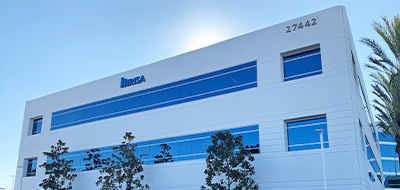
As structural engineers, the fall hurricane season presents unique challenges that push the boundaries of design. Hurricanes Helene and Milton, both from 2024, stand out for their rapid intensification and the vast areas they impacted. With Helene sweeping across Florida’s Big Bend and Milton ranking among the most intense Atlantic hurricanes in history, it’s clear that structural resilience is more important than ever.
Here’s how engineers can dive into the technical details of hurricane-resistant design and take valuable lessons from these storms.
1. Wind Loads and Lateral Resistance
Hurricanes like Helene and Milton bring with them fierce winds, often reaching over 140 mph, causing massive lateral forces on structures. Wind load analysis is one of the most important aspects of hurricane design, particularly for tall buildings and long-span structures. Engineers use software like RISA-3D to model these forces and design the structure's lateral load-resisting system (LLRS), which might include shear walls, braced frames, or moment frames.
For example, in Helene’s path, structures with poorly designed lateral systems were more vulnerable to wind-related failures. By analyzing factors like gust effects and torsional irregularities, engineers can identify weak points and ensure a building’s frame and cladding systems remain intact under extreme wind pressures.
2. Foundation Design for Surge and Flood
Along with high winds, hurricanes bring significant storm surges and inland flooding. Hurricane Milton wreaked havoc with storm surges that flooded coastal areas, damaging the foundations of several buildings. The key to surviving this kind of assault is not just about wind resilience but also about designing foundations that can handle inundation, soil erosion, and increased hydrostatic pressure.
RISAFoundation provides tools to model these situations, ensuring that buildings in hurricane-prone areas have foundations that can withstand soil movement and water pressures. Deep foundations like piles or caissons, combined with flood-proofing techniques, offer the stability needed in coastal regions. By running multiple load cases, engineers can check for soil failure or foundation uplift during severe flooding.
3. Post-Tensioned Concrete for Flexibility
In regions susceptible to hurricanes, post-tensioned (PT) concrete systems are becoming more popular due to their ability to offer strength without sacrificing flexibility. PT slabs and beams, commonly designed using ADAPT-Builder, can withstand greater bending and deflection forces, which are crucial during high wind and seismic events.
In the case of Milton, many of the surviving structures in its path used PT systems that absorbed stress without cracking. PT systems allow buildings to shift and sway under extreme conditions without collapsing or enduring significant damage. This makes them ideal for hurricane-prone regions, where repeated storms could stress structures over time.
4. Seismic Considerations in Hurricane Design
Though primarily a concern in earthquake zones, seismic-resistant design can also benefit hurricane-prone areas, especially in high-risk regions like Florida. Hurricane-induced vibrations and shifting ground, especially in areas prone to liquefaction, can cause buildings to endure seismic-like forces.
By combining wind and seismic load analyses using tools like RISA, engineers can create dual-purpose designs that protect buildings against both hurricane-induced and seismic stresses. This comprehensive approach leads to more resilient structures capable of handling multiple types of natural disasters.
5. The Role of Building Codes and Standards
Engineering for hurricanes isn’t just about software—it’s also about staying ahead of building codes and standards, which have been evolving to reflect the growing severity of storms. The ASCE 7-16 and upcoming ASCE 7-22 standards provide the guidelines engineers need to design for wind loads, storm surge, and flood risk, including considerations for hurricanes like Helene and Milton.
These standards have increased the required safety factors for high-wind regions and introduced new requirements for cladding, roof assemblies, and lateral systems. Engineers using tools like RISA can quickly verify their designs against these codes, ensuring compliance without needing to run manual checks.
6. Collaborative Design with RISA-Revit Link
Collaboration is key when hurricanes are on the horizon. As engineers coordinate with architects, contractors, and other stakeholders, tools like RISA-Revit Link simplify the process of sharing models and integrating structural designs with architectural plans. By seamlessly transferring information between platforms, engineers can ensure that design changes necessitated by hurricane resilience are communicated and implemented efficiently across the entire team.
This feature is especially useful when working on fast-paced projects in hurricane-prone areas, where rapid design iterations and updates are necessary as storms develop.
As Hurricanes Helene and Milton remind us, fall hurricane season is unpredictable and challenging—but with the right tools, structural engineers are more than capable of building structures that can withstand these storms. Whether it’s modeling wind loads in RISA-3D, designing robust foundations in RISAFoundation, or crafting flexible post-tensioned systems in ADAPT, we have the resources to meet these challenges head-on.
Fall hurricane season will always test our designs, but it also gives us a chance to showcase our expertise and advance the resilience of our built environment. By integrating advanced software, staying updated on building codes, and learning from past storms, we can continue to build stronger, safer structures—ensuring that even the fiercest hurricanes won’t knock us down.




